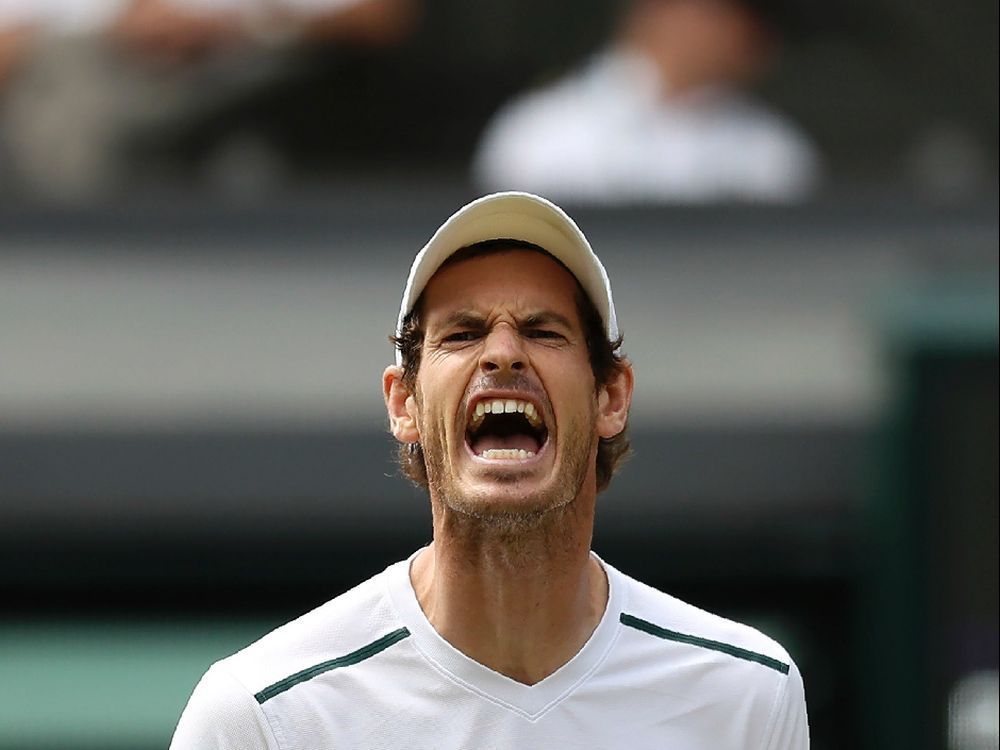Andy Murray at a crossroad: has the punishment of elite tennis taken its toll?

There can be a heavy cost of chasing greatness, as Andy Murray is discovering. The wanderlust he embraced in those dark winter days of 2016, harvesting ranking points everywhere from Beijing to Vienna in his quest to topple Novak Djokovic as world No 1, has played havoc with his hip. What looked at first like an innocuous twinge has developed, to judge by the strong suggestions that he could miss next month’s Australian Open, into the greatest challenge of his career.
Whichever way you slice it, it is rank rotten fortune. Murray’s usurping of Djokovic atop the rankings had looked as if it would herald a dynastic shift, from the twin totems of Roger Federer and Rafael Nadal to the Scot and the Serb born just a week apart, who shared the same gift for filleting opponents from the back of the court. Sadly, Murray’s encore in 2017 was the equivalent of Paul McCartney following 15 choruses of Hey Jude with the ghastly Ob-La-Di, Ob-La-Da.
Even before his hip problem, he did not so much plateau as regress, losing in Melbourne to one-dimensional serve-and-volleyer Mischa Zverev, whom Federer subsequently dispatched for the loss of only eight games. Today, partly through results but mostly through enforced absence, Murray finds himself the world No. 16, at a critical crossroads. It is doubly galling that he is at risk of missing Australia, the one major where he could be forgiven for thinking that history owes him. No player besides Murray, male or female, has reached the final of the same slam five times and lost on every occasion. Four of those defeats, much to his bitter regret, have come against Djokovic. Even Martina Navratilova had the decency, by losing a Wimbledon semi-final to Hana Mandlikova in 1981, to let Chris Evert take the odd All England Club title. She would win nine of them, after all.
It is a peculiar quirk of fate that Murray should be the member of the big four in the most precarious health. Just when Federer looked like obeying the normal rules of anno domini, when Nadal seemed likely never to recover full strength in his knees, and when Djokovic’s attritional approach forced him into brief exile with tennis elbow, it is Murray who has fallen off the radar. Always scrupulous about his conditioning, he has been stricken by chronic injury when he needed it least. What should have been his time to make hay is instead a period of limbo, in which he frets about whether the resilience that helped yield three slams and two Olympic golds is compromised for good.
We should, for now, know better than to doubt him too much. Murray underwent a serious back operation after his Wimbledon triumph in 2013 and rallied to make at least the quarter-finals of each major the following season.
But hip trouble among tennis players is unusually recalcitrant. Nick Kyrgios, the gangly if prodigiously talented Australian, has struggled to shake it off, playing with the truculent attitude of a 22-year-old but the awkward movement of a 52-year-old.
It is one thing, as Federer has demonstrated, to switch to a more sparing schedule to hold back the onset of time. But it is another matter altogether to adapt one’s style for the sake of self-preservation. There is little question that the baseline duelling beloved of Murray and so many of his peers is increasingly driving them into the dust. The World Tour Finals were notable less for the unstarry final between Grigor Dimitrov and David Goffin than for injury tales. Murray, of course, has been the most conspicuous casualty, but it is too glib a remedy to suggest that he should go easy on the 47-stroke hardcourt rallies, especially when these have been so central to his success.
So far, Murray has avoided using the word surgery, but it is apt to ask whether the rest and recuperation strategy is working. He was visibly uncomfortable at his exhibition match with Federer last month, struggling both with changing direction and charging to the net. With arguably the most physically draining slam less than four weeks away, that is not an encouraging signal.
There is genuine sadness about this chapter for Murray, which should have been his moment to throw off his casting as a pageboy to a trio with 47 major glories between them. He had talked confidently of being able to sustain his career for another five years, and his relentless discipline in training under Ivan Lendl gave reason to take him at his word. Now Lendl has retreated to his pick of Florida’s finest golf courses, and Murray is left to confront an uncertain convalescence.
If we have truly seen Murray’s pomp curtailed, then we can take comfort from having seen the kind of player with which this country is not familiar. But it feels far too premature to pension him off to a life of leisure with his two Border Terriers. Murray, as cussed as they come, would doubtless agree.
The anxiety is whether the latest murmurs from his camp signal a bump in the road or the end of one. Murray is 30, the same age as Andy Roddick when the American wisecracked his way into retirement. Be in no doubt that this is a pivotal moment, as Murray faces the prospect that his last competitive years could, if he is not careful, be his lost years.





